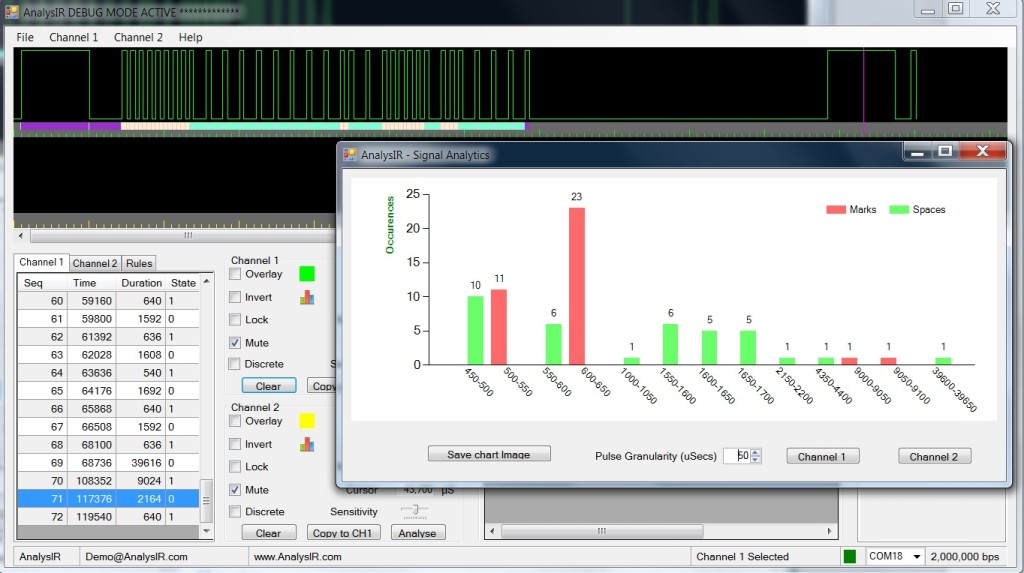The first set of kits has shipped today and because we were able to get a discount on the components we also included some bonus components as a gift (2 x npn transistors, 4 x 100 ohm resistors & 4 x 4k7 ohm resistors). These extra components may be of use to those who want to build their own IR led Driver circuit with the TSAL6100. We didn’t realise that shipping components was such an ordeal (individual Customs & Air Safety declarations depending on destination). The shipping cost was more than budgeted, but was also offset by the discount achieved.
On the Raspberry Pi front, AnalysIR is now running well without any noticeable glitches. The approach we have adapted is to connect to the RPi over the network. The solution was to pipe the output over the LAN to a virtual serial port on the Windows PC. The virtual serial port utility is freely available for Windows and the network stuff on the RPi is just standard shell commands. I should point out that we haven’t yet tried to measure the modulation frequency on the RPi, just straight decoding though the IR Receiver. When idle we are using only 1.3% CPU on the RPi, when recording a single signal it goes to 1.6% CPU & when full out recording IR it goes up to ~ 4.9% CPU usage. This is pretty good as it doesn’t impact on other processes; considering our first attempt was using 99% CPU when idle 🙂
The potential to decode & analyze over a network may lead to some interesting features in future – ideas welcome. As a minimum, the work with the RPi will make the port to the Arduino Due easier (we are expecting a Due next week) and also when the Arduino Yún is released with WiFi

